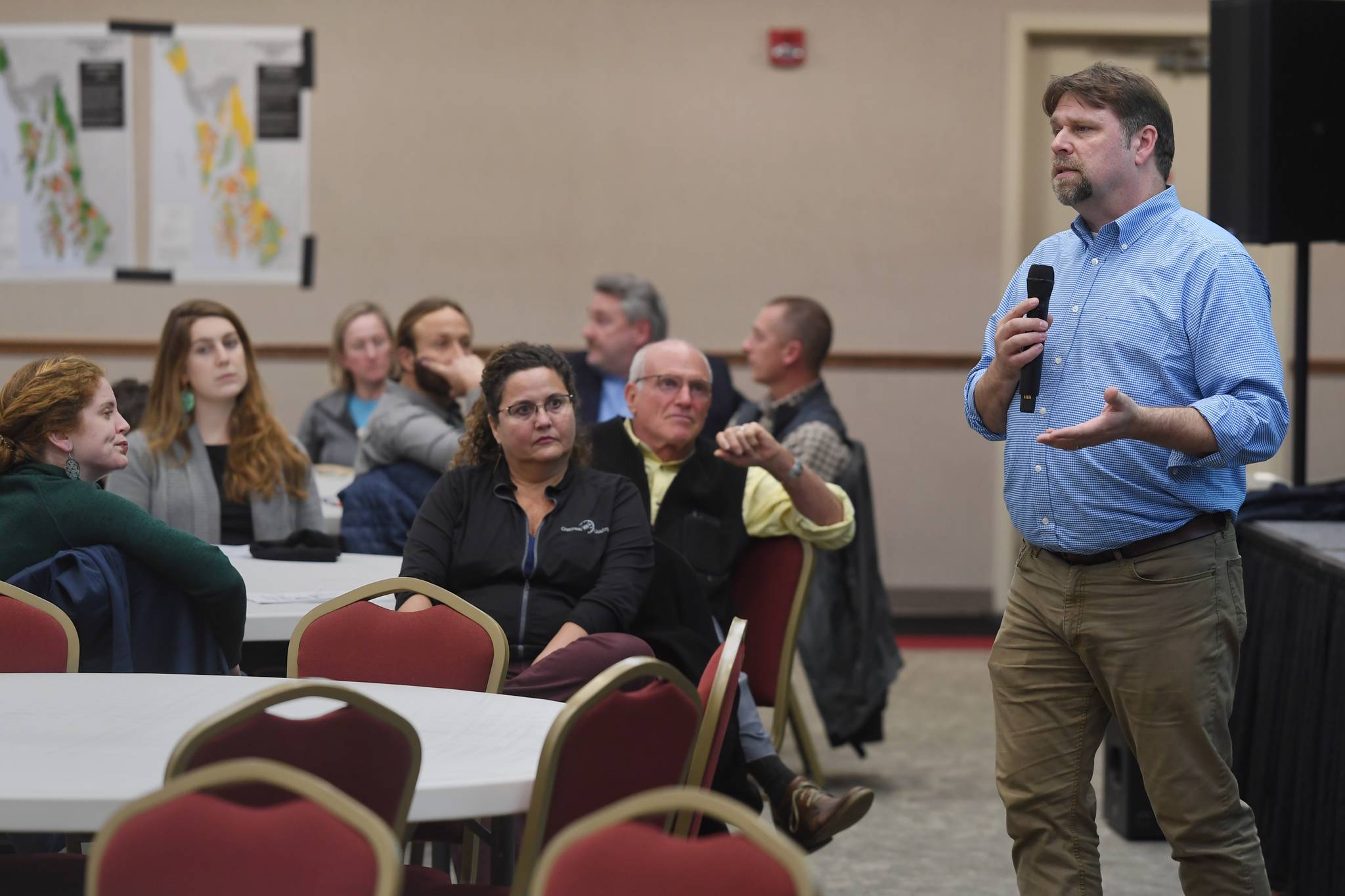What began as something of a dry, technical meeting turned into a confrontational display of anger at the Forest Service Monday evening.
It was meant to be a public information meeting held by the Forest Service regarding the six alternatives to the Alaska Roadless Rule the U.S. Department of Agriculture has drafted. But by the end of the session at Elizabeth Peratrovich Hall more speeches had been made than questions asked. It seemed most of the audience was already well-informed of the details of the alternatives.
[Empire Live: Here’s what people said at Roadless Rule public hearing]
The Forest Service will be holding a series of public information meetings on the Roadless Rule alternatives across Southeast Alaska (and one in Washington, D.C.). Monday night’s meeting was the first of over a dozen scheduled meetings, and while staff from the Forest Service made it clear they were there to inform, the audience was not especially receptive to their message.
The meeting began with Forest Service’s interdisciplinary team leader Ken Tu walking the audience through the six alternatives. He repeated several times throughout his presentation that the main goal in lifting the Roadless Rule was removing some of the regulatory burdens in the way of things like community connectivity and renewable resource development.
“These minor changes that are needed would not have to go through the laborious process we go through now,” Tu said.
Lifting the Roadless Rule would not change the amount of land available for timber harvest, Tu said, only expand areas where it could take place.
“If there’s no change, then why are we here?” one man shouted from the audience. “We’ll get to that,” Tu replied.
When the meeting opened to questions, things started to get a bit more tense. At one point, Meredith Trainor, Executive Director of the Southeast Alaska Conservation Council interrupted the question-and-answer session asking anyone in the audience to stand if they cared about what happens in the Tongass.
Most of the audience stood up.
Trainor then asked for a show of hands how many people preferred the “no-action” alternative. This was met with cheers and clapping from the crowd.
Most of the questions asked were less questions than statements or even accusations. Most of the audience seemed to believe that Alternative 6, which is the Forest Service’s preferred option and would exempt all 9.2 million acres of the Tongass National Forest from the Roadless Rule, was a foregone conclusion.
That was not directly refuted by Forest Service staff.
[Tribal leaders displeased with Roadless Rule process, hope for improvements]
“Rulemaking is an expression of policy preference from the current administration,” said Chris French, deputy chief for National Forest Systems at the U.S. Forest Service. “We take our orders from (Secretary of Agriculture Sonny Perdue), and he ordered us to select Alternative 6.”
Many in the audience were upset the meeting was a public information meeting and not a public comment meeting.
“How can you rationalize not recording any verbal public comment,” one man asked, saying the Forest Service was shirking their responsibility to listen by accepting only written comments.
Forest Service staff maintained they took public opinion to heart and they encouraged people to submit written comments.
Public comment will be accepted until midnight on Dec. 17. Instructions on how to submit public comments can be found at the Forest Service website.

